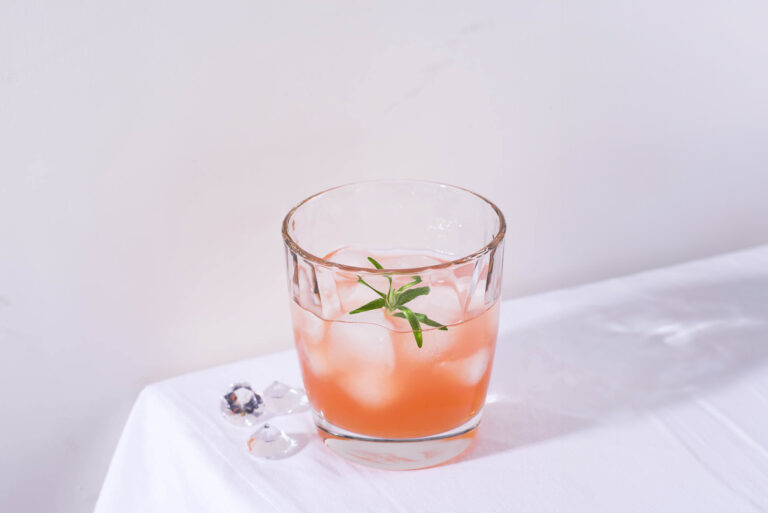This website uses cookies so that we can provide you with the best user experience possible. Cookie information is stored in your browser and performs functions such as recognising you when you return to our website and helping our team to understand which sections of the website you find most interesting and useful.
05/06/2024
Global beverage alcohol market set for moderate recovery in 2025, while challenges persist in 2024
IWSR data shows that India, China and the US will be key value growth drivers, adding US$30bn in incremental value by 2028; brand owners will have to navigate an increasingly complex macroeconomic and regulatory landscape
Following declines in 2023 and continued challenges in 2024, global beverage alcohol is expected to begin its recovery in 2025, according to comprehensive new data and forecasts from IWSR, the global authority on beverage alcohol data and intelligence.
For the first time in nearly 30 years, IWSR recorded a decline (-2% in 2023) in the volume of spirits sold in the key US market. Meanwhile, global total beverage alcohol (TBA) declined -1% by volume and rose +2% by value (US$, variable exchange rate) in 2023. Excluding national spirits such as baijiu and shochu, global volumes were down -1% and value increased by +3%.
While some more positive signs are starting to emerge in 2024, the global TBA market remains subdued after several years of above-trend growth, with challenges expected to continue until 2025 as household spending rebalances after strong inflationary pressures of the past 2 years. TBA volumes are expected to edge up by only +0.4% this year.
When recovery comes, growth is expected to be relatively modest, with volume and value both rising at a CAGR of +1% between 2023 and 2028 – with the main value growth coming from India, China and the US.
Together, India, China (including national spirits) and the US are expected to add US$30bn in incremental value (at 2023 prices) by 2028, as the TBA growth axis continues to shift towards developing economies. The next two most value-adding markets are Brazil and Mexico.
Beverage alcohol’s 2023 difficulties were driven by a rapid softening of demand as cost-of-living pressures mounted across major consumption markets, combined with a strong rebound in inventories weighing on key categories.
The major volume growth market in 2023 was India. All major beverage alcohol categories (except rum and wine) increased their volumes here, with both Scotch and US whiskies recording +7% volume gains. Elsewhere, markets including Colombia, the Philippines and Thailand all posted volume and value increases.
The US spirits market (volumes down -2%) declined for the first time in nearly 30 years in 2023, and every major TBA category saw volume declines, except for tequila, some US whiskey segments and RTDs. Looking forward, tequila is poised to add the most incremental value to the US spirits market by 2028, driven by premium-and-above expressions.
China experienced volume declines across a number of categories, amid concerns over slowing economic growth and rising unemployment among younger LDA consumers. International spirits grew by +2% as the on-trade reopened, but volumes of both Cognac (-3%) and malt Scotch (-11%) suffered falls.
These market conditions reflect a more complex and uncertain macroeconomic landscape, with IWSR consumer research indicating that households remain under considerable financial pressure, and amid signs of increasing government regulatory pressures in key markets.
“The ongoing shift in the TBA growth axis, with gains now coming increasingly from developing markets, entails a greater exposure to business risk. Companies need to reorientate their global strategies to target new growth opportunities,” says Emily Neill, COO Research and Operations, IWSR. “Expansion across categories as well as geographic footprint will be increasingly important. In today’s global TBA marketplace, companies need to continue to innovate in order to succeed.”
IWSR’s analysis of the global beverage alcohol market also shows:
Premiumisation evolves
Premiumisation decelerated further, with volume declines in the core premium price band for both spirits (-3%) and wine (-3%), although super-premium-and-above price tiers showed more resilience (0% and -2% respectively).
Premium beer outperformed, gaining +2% in volume and +5% in value, as consumers increasingly prioritised affordability alongside quality. Premiumisation continued in global travel retail – despite a notable rise in promotional activity among the higher price echelons.
“Future growth is now no longer guaranteed to come from core premium price tiers, although the prospects here should begin to brighten from 2025 onwards,” remarks Neill.
Subdued growth for spirits
Spirits had a lacklustre 2023, with volumes flat versus 2022. Subdued growth is expected to return in the years ahead, with predicted 2023-28 CAGRs of +1% (volume) and +2% (value) excluding national spirits. Including national spirits (such as baijiu and shochu), volumes are expected to be flat, with value rising by +1% CAGR.
The premiumisation universe for spirits is narrowing: while agave was the key driver of premium-and-above growth across a broad range of geographies in 2023, the gin boom has ended even more quickly than was anticipated, with marked declines from pandemic highs in key markets such as the UK (2022-23 volumes -14%) and Spain (-11%).
Beer holds steady, with growth opportunities
Despite a -1% decline in global beer volumes in 2023, the category posted a +4% value increase, and is expected to record +1% CAGR growth for both volume and value between 2023 and 2028.
South Africa was a bright spot in 2023, with beer volumes rising by +9% thanks to a combination of affordability in a difficult economy and brand owner investment. The market is expected to continue to grow at a volume CAGR of +3% to 2028.
Brazil is another key driver for the future, adding the most incremental growth from a single market and expected to expand at a CAGR of +3% to 2028 (both volume and value).
Wine’s decline brightened by rosé
The structural decline of the global wine market continued in 2023, with volumes down -4% versus 2022. Volume declines are expected to persist to 2028 – at a CAGR of -1% – with value growth flat.
The general gloom enveloping the category is lifted by the strong appeal of premium rosé in key markets such as the US, the UK and Australia. Rosé’s popularity is being fuelled by a number of factors, including its consistency and drinkability; a fun and upbeat image associated with social occasions such as bottomless brunches and outdoor summer entertaining; and a plethora of aspirational, recognisable and elegant brands.
RTDs continue to shine
In 2023, RTDs were the star of the global beverage alcohol market – the only major category to record volume growth (+2%), alongside a strong +6% uptick in value. This growth is expected to continue, with both volume and value forecast to grow at a CAGR of +3% between 2023 and 2028.
As they expand, RTDs are becoming more sophisticated: cocktails and long drinks are continuing to take share as consumers explore more premium options, as well as seeking more affordable and convenient alternatives to traditional beverage alcohol categories.
Agave broadens its horizons
The US continues to dominate the global agave spirits market – posting growth of +4% (volume) and +7% (value) in 2023 – with solid growth in premium-plus price tiers. It will account for the vast majority of future value growth for the category, which is forecast to expand globally at a CAGR of +6% between 2023 and 2028.
But agave spirits are continuing to gain ground outside their US and Mexican heartlands, rising +13% by volume and +25% by value in 2022-23. As well as taking shelf space from the declining gin category in markets such as the UK and Spain, agave is gaining share of spirits in other key destinations, including Canada and Australia.
Volumes in India nearly doubled during 2023 – and home-grown agave spirits are making a mark here. Agave is also the fastest-growing major spirits category in global travel retail, rising by +37% (volume) and +58% (value) in 2022-23.
No-alcohol buoyed as moderation goes mainstream
All no-alcohol categories recorded impressive gains in 2023: global no-alcohol beer volumes were up +6%, still/sparkling wine grew by +7%, and no-alcohol spirits continued their recent double-digit growth with a +15% volume surge. In value terms, growth was higher still.
The latest Bevtrac consumer data from IWSR indicates that no-alcohol is the only market segment with positive momentum, driven by year-on-year increases in the no-alcohol drinker population in several key markets, including India, China, the UK, and the US.
As moderation enters the mainstream, it is being embraced by consumers for financial as well as health reasons, leading to long-term lifestyle changes. Regulatory pressures in a number of global markets reinforce these trends, as does the influence of guidance on alcohol consumption from governments and world agencies.
The above analysis reflects IWSR data from the 2024 data release. For more in-depth data and current analysis, please get in touch.
CATEGORY: All | MARKET: All | TREND: All |





